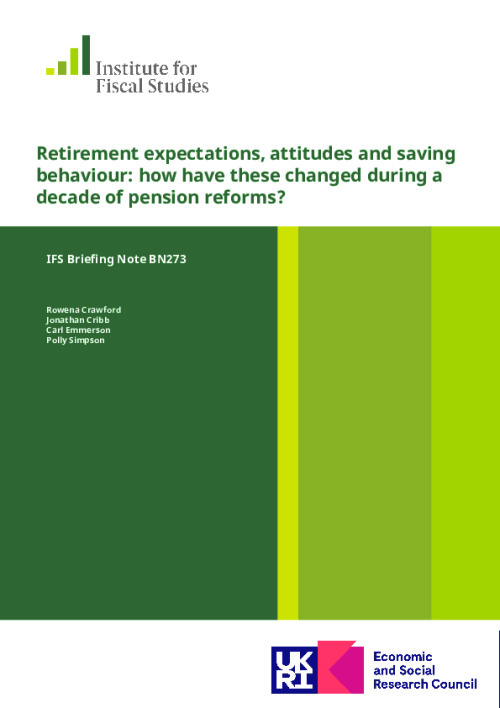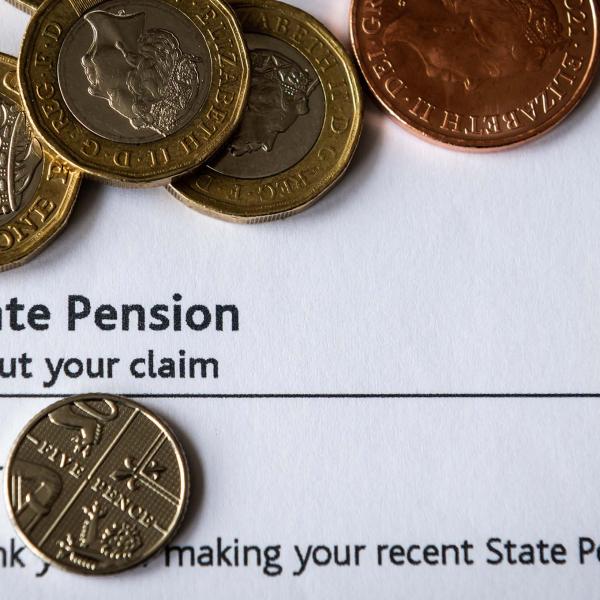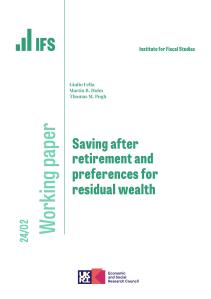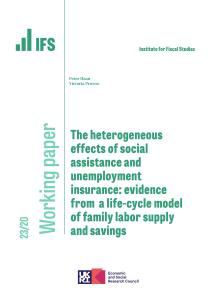The last decade has been one of substantial reform to the UK retirement savings environment: the state pension age for men and women has increased, the ‘new state pension’ was introduced, automatic enrolment into workplace pensions has been rolled out for employees, pension freedoms were introduced and there have been reforms to public sector pension schemes.
In this report, we examine how individuals’ retirement expectations, attitudes and saving behaviour have changed over the period 2006 to 2017 using data from the Wealth and Assets Survey. The outcomes we consider are not only of direct interest, but may also give a sense of how these reforms will affect individuals’ behaviour and retirement outcomes well into the future.
Key findings
Private pensions are increasingly expected by employees to play a role in providing retirement incomes.
- There has been a sizeable increase in the proportion of private sector employees expecting to get any income from a private pension in retirement – from 63% in 2013 to 78% in 2017. This suggests that the increase in private pension membership (from 52% to 74% among the same sample over the same period), driven by the introduction of automatic enrolment, does not simply reflect a ‘timing effect’ of individuals being brought into pension saving earlier than they would otherwise have been.
- The increase in the proportion of private sector employees who expect a private pension to be their largest income source in retirement has been smaller (+6 percentage points between 2013 and 2017). This suggests that many new members are expecting to receive less from a workplace pension than from at least one other source, such as the state pension, in retirement. Among the self-employed, in contrast, there has been a decline in the proportion expecting to receive any income in retirement from a private pension. This mirrors the decline in private pension membership among the self-employed, which is a trend of ongoing policy concern.
Confidence in retirement incomes has increased in recent years, but levels of understanding of pensions and confidence in the adequacy of retirement incomes remain low.
- Only around half of individuals report that they understand enough about pensions to make decisions about saving for retirement. This low level of self-reported understanding has been persistent over the last decade, despite major pension reforms and consequent discussion of pensions in the media.
- The proportion of individuals who are confident that their income in retirement will give them the standard of living they hope for increased by 11 percentage points between 2008 and 2017. Despite this, confidence in the adequacy of retirement incomes remains low, at only 53% in 2017.
- A similar pattern of increased confidence in retirement income adequacy is observed across both men and women, those working and not working, and those working in the public and private sectors. This suggests it is not the direct result of recent pension reforms (such as automatic enrolment), which would have affected different groups differently. Instead, it could be driven by rising real incomes and general consumer confidence, which both improved over this period.
Saving outside of pensions has become more common since 2012, having fallen between 2008 and 2012. This is likely driven by changes in economic conditions – in particular, increases in household incomes and general levels of confidence.
- The proportion of individuals reporting having saved outside of pensions in the last two years increased from 46% to 56% between 2012 and 2017, following a small decline between 2008 and 2012. This U-shaped pattern is slightly more pronounced among groups with lower saving rates, who are more likely to be shifted from saving to not saving by a deterioration in their financial circumstances.
- The proportion of those who have not saved for reasons related to affordability has declined since 2012, while the proportion not saving because they ‘did not want to’ or ‘did not need to’ has been relatively unchanged. This suggests that the increased propensity of individuals to save is likely driven by improving economic conditions, higher household incomes and rising confidence over this latter part of the decade.
- Individuals’ ‘preferences for saving’ – as measured by various indicators of willingness to give up income today in order to enjoy a better standard of living in the future – have been relatively stable over the past decade. This further supports the suggestion that changes in saving rates are driven by changes in economic circumstances rather than by changes in how people trade-off current and future spending.
The average age at which men and women expect to retire has increased by more than 2 years in a decade, but expected retirement length is broadly unchanged.
- When asked when they will retire, individuals aged 40–54 in 2006–08 responded with very rounded numbers: only 8% responded with an age that was not a multiple of five. By 2016–18, responses among equivalently aged individuals were much more varied: 29% reported expecting to retire at 66, 67 or 68.
- Over the last decade, the average age at which men and women in their 40s and early 50s expect to retire has increased significantly. For men, the average expected retirement age increased from 62.9 to 65.0 between 2006 and 2017. The increase was slightly larger for women, from 61.7 to 64.2, but women in this age group still expect to retire more than half a year earlier than men (despite having the same state pension age).
- The increases in the average expected retirement age between 2006 and 2017 were greater than the increases in the state pension age. Between 2006 and 2017, the average SPA increased by 1.5 years for men aged 40–54 and by 1.8 years for women, while the average expected retirement age increased by 2.1 years for men and 2.4 years for women. The increase in expected retirement ages is similar across those with different levels of education, those working in different sectors, those with different levels of health and those with different private pension arrangements.
- Expected retirement length has, on average, remained broadly unchanged over this period, at around 21 years for men and 22 years for women, despite the later expected retirement ages. On average, 40% of men and 34% of women aged 40–54 in 2006 stated that they had thought about how long a retirement they might need to fund, and this proportion remained fairly stable over the subsequent decade.











